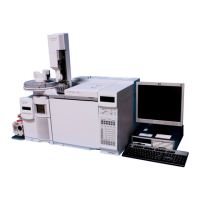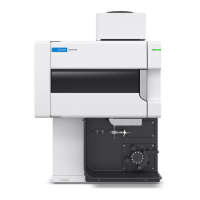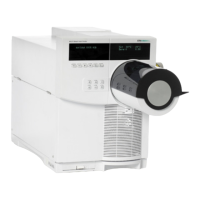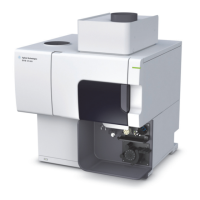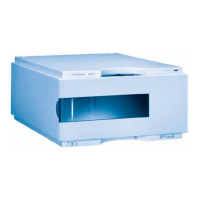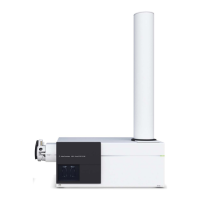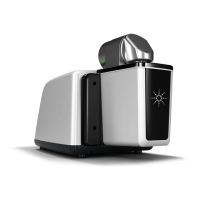8-44. Reference Receiver
8-45. The beam splitters of the A6 Sampler Assembly direct some of the laser light through a second 45° polarizer
and onto another photodiode. Because of the polarization orientation, the beam power after this polarizer varies
sinusoidally at the difference frequency of the two laser frequency components. The beam power at the difference
frequency is converted to current by the photodiode and amplified to TTL levels. The frequency of the TTL output is
the reference frequency. The reference receiver electronics also provide a digital signal called REFERENCE
RECEIVER ON (REF ON) that tells the state machine the laser is working properly.
8-46. Shutter Mechanism
8-47. The exit aperture shutter of the shutter assembly has three positions; the first blocks the laser beam entirely,
the second allows a small diameter laser beam to exit for optical alignment purposes, and the third passes the entire
laser beam.
8-48. ASSEMBLY/SCHEMATIC LOCATIONS OF HP5517B/C/D BLOCK DIAGRAM ELEMENTS
ELEMENT _________________________ HP 5517B/C/D ASSEMBLY ________
Control Electronics A3 and A4
Power Amplifier A1
Warm-up Error Amplifier A3
Subtracting Sample & Hold A3
Photodiode & Amplifier A3 and A4
Clock and State Machine A3
Laser Assembly A5
Sampler Assembly A6
Reference Receiver A3 and A6
8-49. REAR PANEL LED INDICATORS
8-50. The status LEDs, mounted on the HP 5517B/C/D's rear panel, provide status information on power supply
input (±15 Volts), fuses, laser output and tuning, and the reference frequency output. See Figure 3-2 for a more
detailed description of the LEDs.
8-51. BUILT-IN TEST AIDS
NOTE
A TILDE ("-") PRECEDING A SIGNAL INDICATES NEGATIVE-TRUE LOGIC.
8-52. Several jumpers are included to aid in testing. The RESET jumper, JMP1, places the state machine in a
repetitive mode to allow signature measurements. The -REF ON jumper, JMP 2, sets the -REF ON signal so that
U17 cannot influence the state machine. LIQUID CRYSTAL jumper, JMP 3, places the liquid crystal in either the
active or passive state. The HTR OK jumper, JMP 4, sets the HTR OK signal so that U15 cannot influence the state
machine. JMP 5, PHOTO DIODE, substitutes a known current for the photodiode and is used for testing the
photodiode amplifier and the subtracting sample and hold circuits. JMP 6, POWER AMP, supplies ±100 mV to U13
(Pin 3) to test the power amplifier. JMP 7, HEATER, disables the power amplifier.
The CLOCK FREQUENCY jumper, JMP 8, allows the clock circuitry to generate either of the following three clock
rates: the NRM position generates 100 Hz, the HI position generates 1000 Hz, and by removing the jumper entirely,
the clock circuit generates a 75 kHz signal.
NOTE
There are two "LO" positions for the REF ON jumper, and two "UP" positions for the POWER AMP jumper. For
proper placement, refer to the schematics for A3 when using these jumpers.

